Today we reminisce about
The Two Mrs. Carrolls (1947)
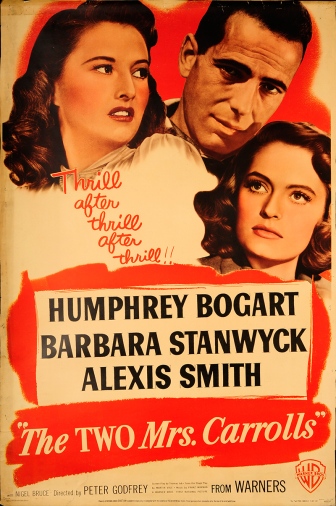
Directed by Peter Godfrey
Starring: Humphrey Bogart, Barbara Stanwyck, Alexis Smith
* Published specifically for The Second Remembering Barbara Stanwyck Blogathon hosted by Maddy at Maddy Loves Her Classic Films and Crystal at In The Good Old Days of Old Hollywood *
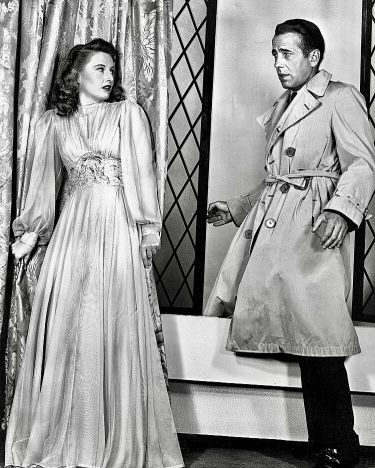
Synopsis
The story begins in Scotland during the very end of summer. Sally Morton (Barbara Stanwyck) and her beau Geoffrey Carroll (Humphrey Bogart) are on a fishing expedition, having a jolly time and reminiscing about their last two weeks together. Although they have not known each other for long, they are madly in love and look forward to a future together. As Geoffrey, who is a painter by trade, is sketching a portrait of Sally, it begins to rain heavily. They quickly seek refuge in a nearby cave but since all of their belongings are still outside, Geoffrey has to run and fetch them. He leaves his jacket with Sally who notices that an envelope that has fallen out of one of the pockets and onto the ground. When she picks it up, a look of mortified surprise comes over her face. The letter is addressed to a “Mrs. Carroll” in London. Sally confronts Geoffrey who admits to being married and being a father; facts that he had initially kept from her. He explains that his wife is an invalid, having been incapacitated since the birth of their child, and that their marriage is over. The letter was to ask her for a divorce. Despite his pleas for her to stay, Sally runs off without a second thought.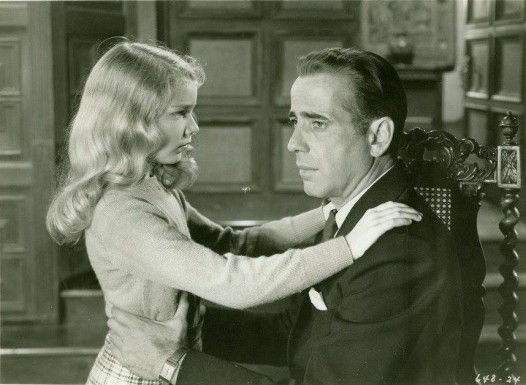 Shortly after returning from Scotland, Geoffrey starts painting a portrait of his wife as the Angel of Death. She has recently become ill and does not seem to be getting better, spending all of her days in bed and having their daughter, Beatrice “Bea”, look after her. His wife’s condition in addition to having lost Sally weighs heavily on Geoffrey’s artistic subconscious. The same day that he completes the portrait, he goes to a local chemist and buys a poisonous substance for which he has to sign his name. Instead of using his real name, Geoffrey suspiciously signs the register as “Mr. Fleming”. Back at home, he speaks with Bea and relieves her of her duties, thereafter entering the bedroom with his wife’s glass of milk in his hand. The door closes firmly behind him.
Shortly after returning from Scotland, Geoffrey starts painting a portrait of his wife as the Angel of Death. She has recently become ill and does not seem to be getting better, spending all of her days in bed and having their daughter, Beatrice “Bea”, look after her. His wife’s condition in addition to having lost Sally weighs heavily on Geoffrey’s artistic subconscious. The same day that he completes the portrait, he goes to a local chemist and buys a poisonous substance for which he has to sign his name. Instead of using his real name, Geoffrey suspiciously signs the register as “Mr. Fleming”. Back at home, he speaks with Bea and relieves her of her duties, thereafter entering the bedroom with his wife’s glass of milk in his hand. The door closes firmly behind him.
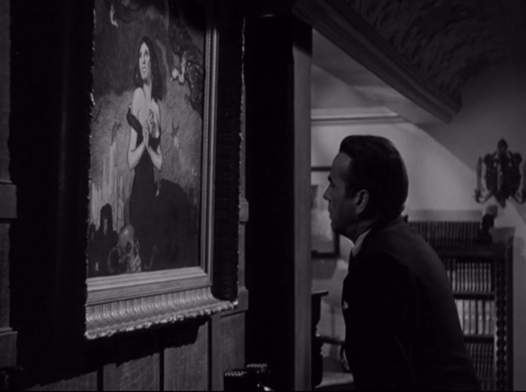
Fast forward two years to the Cathedral Town of Ashton where a recently remarried Geoffrey has taken up residence. His new wife is none other than Sally and the couple, along with Bea, live in a house that was left to Sally by her late father. Things have been going very well for them though Geoffrey has recently had recurrences of “artist’s block” which prevents him from producing artwork. Frustrated and bitter, Geoffrey refuses to come downstairs when Sally’s friend and former beau Charles Pennington comes to visit. Charles has brought along a certain Mrs. Latham and her daughter, Cecily (Alexis Smith), who wishes to have her portrait completed by Geoffrey. Sally eventually convinces Geoffrey to meet them and despite his negative attitude agrees to take the job for monetary reasons. It is not long after that the chemist from London appears outside of the Carroll home. The sight of him provokes Geoffrey into a frenzy.
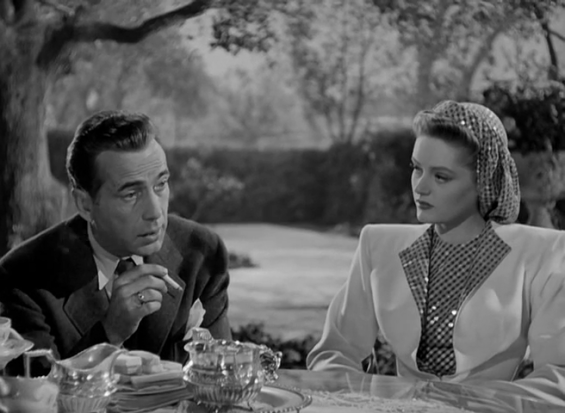
Several weeks go by and certain changes are apparent. Geoffrey and Cecil have grown quite close and have fallen in love. Sally recognises Cecily’s infatuation with her husband but does not suspect that their attraction is mutual. For the past three weeks, Sally has been ill on-and-off with a mystery illness that even baffles her doctor. At first Geoffrey seems legitimately concerned for her and even questions her doctor about the possibility of seeing a specialist. Then little by little, Geoffrey’s past history and motivations are revealed, unveiling a penchant for pathological lying and a dive into criminal activity.
Will Sally be able to put herself out of harm’s way before it is too late?
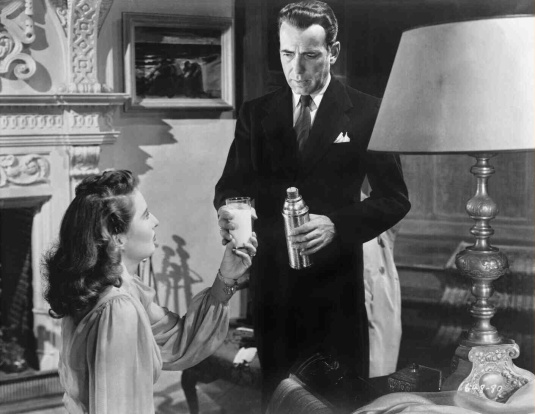
Background & Thoughts
The Two Mrs. Carrolls began filming in April 1945 after a bit of delay in deciding who would play the lead roles and who would be working behind-the-scenes. It was completed on schedule and with no issues but Warner Bros. decided to shelve the film, releasing it almost two years later in March 1947. Although there are several theories as to why this occurred, there is no official explanation on record so one can only hypothesise as to why this decision was made. Critics had a field day with the film, noting what they considered to be poor performances of Bogart and Stanwyck in addition to the overall absurdity of the story. Many comparisons were made to The Two Mrs. Carrolls being too similar to films released at around the same time, such as The Picture of Dorian Gray, Gaslight and Suspicion. The film was considered a box-office failure even though it was profitable both domestically and internationally.
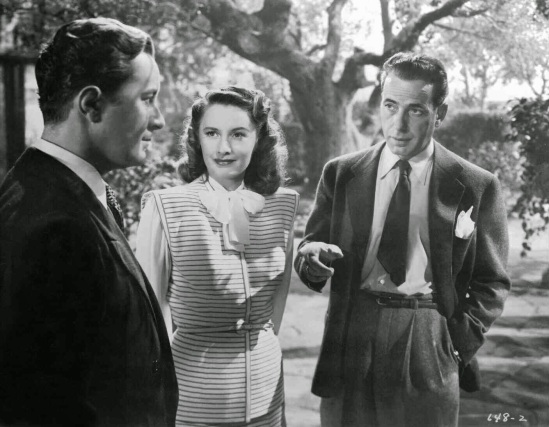
It has been suggested that Bogart’s performance was over-acted and unconvincing, causing embarrassment and worry to Warner Bros. who did not want it affecting his popularity. It rather surprised me to read this because I never got these impressions while watching the film or even after when recollecting over what I had seen. In fact, I was completely won over by seeing this new, darker side to Bogart. Geoffrey’s actions were seedy and repulsive but I could not wait to see what would happen next. Another aspect to Bogart’s Geoffrey is that he is not a perfect deviant specimen. He doubts himself quite often and seems very hesitant in committing criminal acts, which I suppose is proof of how deep his mental illness runs. It would have been interesting to have more of a back story about Geoffrey to pinpoint exactly what caused him to have such tendencies. He and Stanwyck worked well together both on-screen and off and they did manage to have enough chemistry in the relatively few good moments their characters shared together.
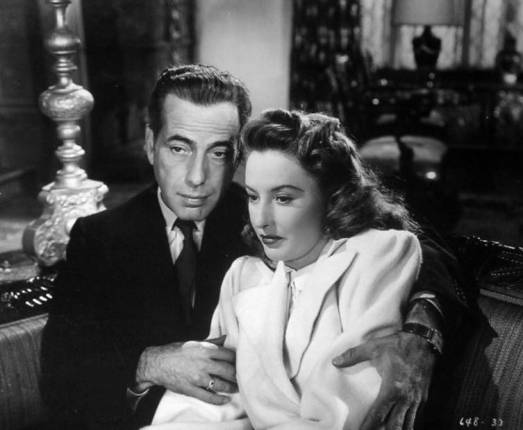
This is primarily a Bogart-Stanwyck vehicle which makes Alexis Smith’s third billed credit a little awkward, especially since she is not heavily featured in the film. To give her credit, Smith did play the part well. Cecily makes you feel as uncomfortable as Geoffrey with her obsessive-like behaviour and complete lack of regard for anything other than what she wants. I do not think that Geoffrey would have gone for her romantically had he not needed money and been at a low point work-wise. This is not to say that he would not have eventually come to feel the way he did about Sally. From Geoffrey’s initial interaction with her, she was nothing special and had no reason to enter his life again.
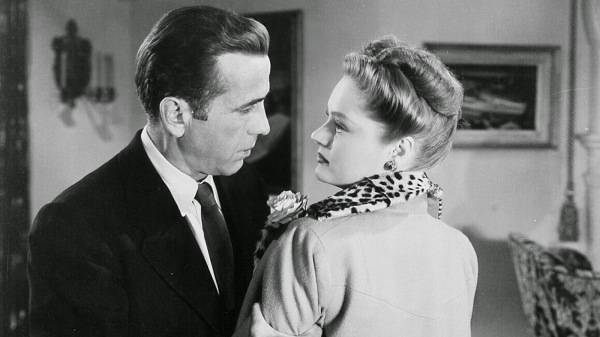
On the whole, The Two Mrs. Carrolls is a good film that keeps your attention and that is highly suspenseful in parts. Visually speaking, it is beautifully photographed and the sets are nicely decorated. There is a certain Gothic feel about the whole thing. As for the story, the subject matter of uxoricide (a word from Medieval Latin meaning ‘the murder of a wife by her husband’) is an occurrence that still happens in modern times, even in conditions similar to the ones portrayed in the film. I feel that the film was unduly panned by critics and that more praise should have been given to its positive aspects. That being said, if I were to change anything about the film, it would surely be the very last scene. After the police arrive and take Geoffrey into custody, he makes a really ill-fitting joke about getting them a glass of milk and then a quirky, parody-like music starts as if to play off of Geoffrey’s dark humoured remark. It was such an awkward way to end things and not at all in the spirit of the rest of the film.
Barbara Stanwyck
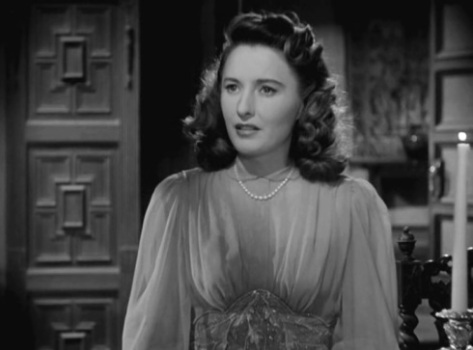
Most of the films in which I have seen Stanwyck have had her portraying strong-willed women with very pronounced no-nonsense attitudes as well as an unbreakable confidence. She quite reminds me of Joan Crawford except that Stanwyck is a bit more abrasive in character. In other words, it would not be very wise to cross her or to get on her bad side because there will likely to be hell to pay on the other side. There are times, however, when Stanwyck shows her softer side such as in Christmas in Connecticut or even in The Two Mrs. Carrolls.
Although The Two Mrs. Carrolls is a dramatic mystery, Stanwyck’s role as fresh-faced and jovial Sally makes it so that she seems to be on a cloud of happiness from all of the seemingly great things in her life. She walks around in some scenes as if she is prancing on air even when she has a grumpy, complaining Geoffrey in front of her. Honestly, where is the magic in their union? Any normal person can see that Geoffrey is a dark figure whose trustworthiness is in question though this naïve wife just continues to live throughout most of the film as if everything is perfectly normal. It is not until the final one third of the film that Sally’s demeanour shifts to becoming more suspicious, eventually being completely terrified out of her wits.
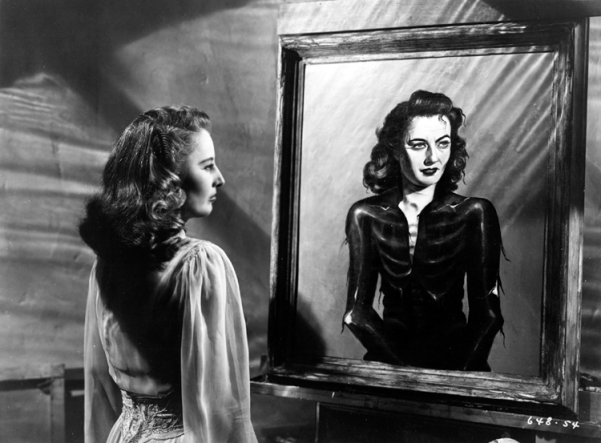
All in all, I would say that Stanwyck gave a decent performance as Sally though I found her emotional range to be too limiting. This is particularly true towards the end of the film in her confrontations with Geoffrey as well as the revealing talk that she had with Bea about his past. During this time Stanwyck mainly held an absent gaze or overdid it with a wincing grimace that her character probably hoped would halt the madness around her. I am not sure that the entire fault should be pointed at Stanwyck, however, for this is the way that Sally was written and eventually directed. Sally could not explode in a rage or start delivering accusations because she had no concrete proof of her current dilemma. She had to control herself as Bea was revealing hard truths to her because she did not want to startle the girl and, moreover, she did not want the youngster to haphazardly mention her reaction to her father. When it came to being just the two of them, husband and wife, she was trying to remain as coy as possible.
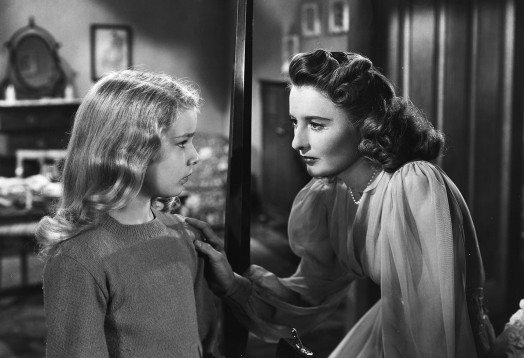
Personally, I prefer the spicier Stanwyck in films like Baby Face, My Reputation, The Strange Love of Martha Ivers and Executive Suite, amongst others. She was a force with whom to be reckoned and it is truly a shock to me that Stanwyck was never awarded an Academy Award for any one of her roles. It is nice that she received an honorary Oscar in 1982, the Golden Globe Cecil B. Demille Award in 1986 and then in 1987, the American Film Institute’s Lifetime Achievement Award. Barbara was one of the greats of Classic cinema.
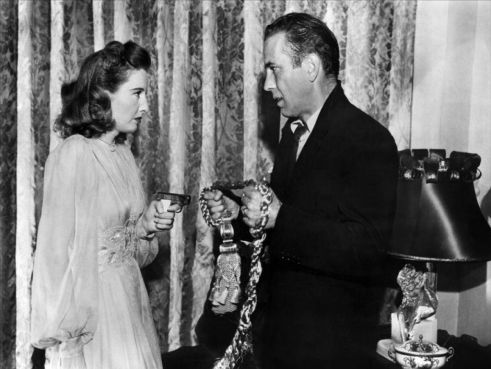




The expectation of a strong Stanwyck seems to be embedded in us, doesn’t it? It does take a while to get used to her softer side. That aspect is shown in East Side, West Side which is a film I prefer over The Two Mrs. Carrolls. There was something lackadaisical about this movie that made me keep it and its characters at arm’s length when I was hoping to embrace them.
LikeLiked by 1 person
Yes, it does! I’m honestly relieved to hear that I’m not the only one who feels this way. I have the TCM 4-disc collection of her films that (I believe) includes ‘East Side, West Side’. Now that I’m done with my article, I can dedicate some time to watching a few more of her films. 😊
As for ‘The Two Mrs. Carrolls’, it was not what I was expecting. I disliked Geoffrey but was fascinated seeing Bogie act as he did. Otherwise, you are quite correct in noting the characters general lack of appeal.
LikeLike
I really enjoyed reading your thoughts on the film, Erica, and much of what you said is in agreement with my own review of the film a while back. I particularly agree with your assessment of Bogart’s performance, and I also like how you pointed out how preconceived notions about actors can maybe impede our ability to accept them in other roles. A lovely post as usual! 😊
LikeLiked by 1 person
Thank you so much, Gabriela! 🤗
I am glad that I chose this film because it has plenty of good points and honestly, just seeing Bogie & Stanwyck together on-screen in fulfilling. Bogie played plenty of bad guys in his early career but not quite anything like this. The scenes when he breaks through Sally’s bedroom window and when Sally discovers her “portrait” are amazingly filmed and very spooky. 👻
I look forward to watching more of Barbara’s films and seeing the range of roles she undertook. 😊
LikeLiked by 1 person
Interesting. I’ve never seen this one before and I think I should change that. The ending sounds a bit random LOL.
I too prefer Barbara playing strong characters, so I’ll have to see how I feel about her performance here. I also can’t believe she never won an Oscar. Great post as usual. Thanks for joining our blogathon.
LikeLiked by 1 person
It’s definitely worth a watch and you can make your mind up from there as to how much you like it. Some British critics called the English ambiance in it very clichéd so I’d love to hear what you personally thought of that. 😊
Barbara is one of those people whose work I increasingly enjoy the more I explore their filmography. She was a real Dame of Classic Film. Thank you for hosting and for dedicating this vent to her, Maddy! 💗
LikeLiked by 1 person
I keep referring to this film as The Two Mrs. Grenvilles! This is an excellent review, though, Erica. I look forward to reading more of your work.
LikeLiked by 1 person
LOL I had trouble not calling it ‘The Second Mrs. Carroll’ which is a direct translation from the French title. 😊 (Ironically that title is more fitting to the cinematic adaptation because, unlike in the book, we never get to know or even see Geoffrey’s first wife.)
Thank you so much for your kind words! I still have a few more AFI entries to do and there are constantly wonderful blogathons to keep me busy. 😀
LikeLiked by 1 person
Write on!
LikeLiked by 1 person
Nice review. I like this movie a lot more than most people here. It’s not a masterpiece but it’s good entertainment. A lot of reviewers seem to find the movie campy which it is in parts, especially towards the ending when Bogart overplays it a little.
Bogart played another similarly unsavory character in Conflict.
LikeLiked by 1 person
Thanks so much, Margot! 🤗
It does seem like this film gets a really bad rap and I’m glad I didn’t know this before watching it, otherwise I would have probably been negatively influenced. Bogie was only campy for me at the very end with the police. Otherwise, I thought he gave a nice performance. As it is not being used to seeing Stanwyck in a less domineering role, it’s a bit strange not seeing Bogie “have it all”. I’ll definitely check out ‘Conflict’ and appreciate the recommendation! 😊
LikeLike
Great review. First (but not last) time I’ve visited your blog. I don’t think the script did Bogie or Barbara any favours. Not one I’d revisit.
LikeLiked by 1 person
Hello Vienna and thanks for dropping by! You are most welcome here anytime you like. 😊
I’ve watched two films in the past two days where Stanwyck is playing a pleasant character. Her performances in those are lightyears away from her turn as Sally.
LikeLike
Great article! This surely sounds like an intruiging film. I had heard a lot about it but now I want to see it! I appreciate your well-balanced thought on it. I undertstand it’s not a perfect film, but that it’s worthy watching. 🙂
LikeLiked by 1 person
Thank you, Virginie! 😀 It has a lot of good qualities and is a very good dramatic mystery thriller type film. Bogie plays it so that you aren’t quite sure about his possible guilt so you are more emotionally invested in the character up to the very end. I definitely recommend this film and hope that you enjoy it! 😊
LikeLiked by 1 person
A great review and a film I need to see again. I remember not being overtly fond of this film, particularly not enjoying Bogart – I have to see if this is because of preconceived notions of Bogart or because he didn’t give a strong performance. Thanks for some great insights!
LikeLiked by 1 person
Thank you so much, Paul! 😊
It’s a different type of role for Bogie and he does almost appear hesitant in some scenes. Like most other people, I mostly identify Bogie with the Noir genre but perhaps seeing ‘Sabrina’ helped me to see him in a different light. It seems like this film is either “love it” or “hate it”. 😉
LikeLiked by 1 person